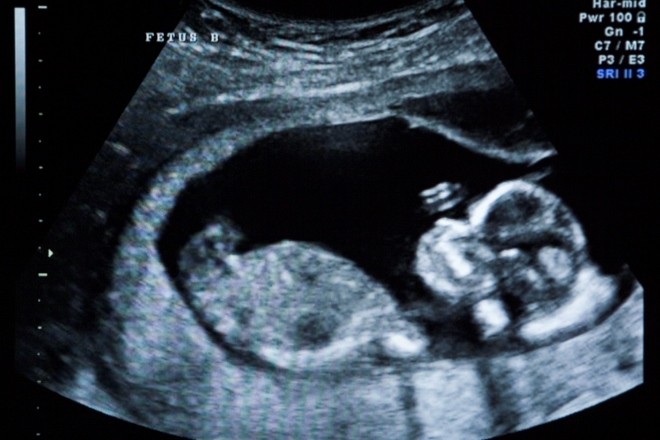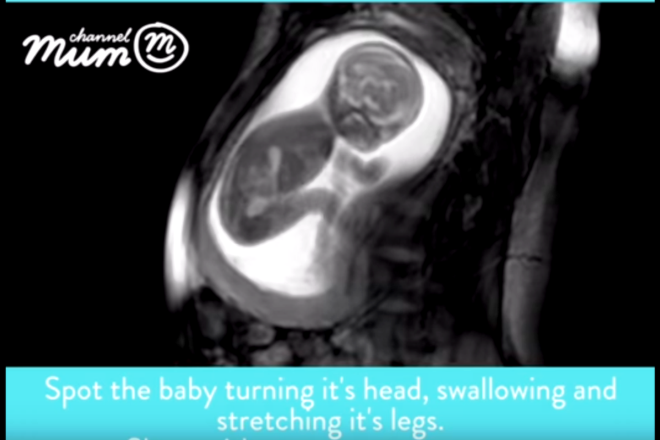Remember these blows to the breath in your stomach? When it seems that there is a future football player growing up. I remember very well: then heel to the liver, then elbow under the ribs. And I still remember, I was amazed: how does it fit there, and to rotate again. Part of the answers to my questions gave an ultrasound. But only in part. The full picture of what was happening in the belly did not reflect it. And neither for me as a "spectator", nor for doctors as "experts." Do you understand what I mean? After all, the future mothers at least three times for pregnancy do ultrasound not in order that they just admire the pusher. Thus, doctors try to identify congenital anomalies of the fetus in time. But a standard study may miss up to half the problems. This is very much. Picture of the standard UZIPOTO: GettyImages- Usually the baby moves too fast, and standard equipment does not keep track of him, "explains David Lloyd, clinical researcher at King's College in London. - Therefore, shooting a 20-week-old fetus in the womb is not so easy. The image turns out to be grainy, not very clear. Besides, at 20 weeks the baby no longer fits into the whole frame. We have to consider it gradually: the head, pens, legs in turn. This is also a minus. David and his colleagues are authors of ultramodern prenatal screening. They are working on a project iFIND, which combines computer technology, ultrasound, magnetic resonance imaging. Such a study allows you to get the most clear and clear picture. The first results are already there. And they are just amazing. One of these days in the network there was a video. Only 24 seconds from the life of a 20-week-old man. Forgive, call it the fruit, the embryo simply does not turn the tongue. The kid twists his head, touches the umbilical cord, straightens his legs. In a word, he behaves like a real izza.
Picture of the standard UZIPOTO: GettyImages- Usually the baby moves too fast, and standard equipment does not keep track of him, "explains David Lloyd, clinical researcher at King's College in London. - Therefore, shooting a 20-week-old fetus in the womb is not so easy. The image turns out to be grainy, not very clear. Besides, at 20 weeks the baby no longer fits into the whole frame. We have to consider it gradually: the head, pens, legs in turn. This is also a minus. David and his colleagues are authors of ultramodern prenatal screening. They are working on a project iFIND, which combines computer technology, ultrasound, magnetic resonance imaging. Such a study allows you to get the most clear and clear picture. The first results are already there. And they are just amazing. One of these days in the network there was a video. Only 24 seconds from the life of a 20-week-old man. Forgive, call it the fruit, the embryo simply does not turn the tongue. The kid twists his head, touches the umbilical cord, straightens his legs. In a word, he behaves like a real izza. The picture that the miracle scanner gives Photo:frame from video— Unlike a standard ultrasound, this allows you to see the entire uterus, says David Lloyd. — Using algorithms of magnetic fields and radio waves, the new scan creates very high-quality footage of the baby in motion. Scientists hope that their development will help to identify developmental abnormalities as early and accurately as possible. After all, many of them can be treated before birth. Well, and the new scanner will allow moms and dads to get to know the baby long before it is born. Isn't it wonderful?
The picture that the miracle scanner gives Photo:frame from video— Unlike a standard ultrasound, this allows you to see the entire uterus, says David Lloyd. — Using algorithms of magnetic fields and radio waves, the new scan creates very high-quality footage of the baby in motion. Scientists hope that their development will help to identify developmental abnormalities as early and accurately as possible. After all, many of them can be treated before birth. Well, and the new scanner will allow moms and dads to get to know the baby long before it is born. Isn't it wonderful?

Making Money with Desserts: Success Stories
Evgeniya Polischuk (Fedutinova) instagram:@evgeniyafedutinovavk.com/janeshomebaking– It all started with baking for family and friends. Gradually, I started posting photos of my baked goods on Instagram – and orders started coming in. I made my first custom-made cake on October 13, 2014, and a little earlier I started making macaroons and cupcakes. You could say that the business “found me”, I am very […]

Soups are cold recipes with photos
Cold cucumber soup with yogurt and lemonsorbet from the chef of the restaurant La Taverna Alexander Zhurkin Photo: Getty Images Ingredients: Plain yoghurt – 125 g Cucumber – 150 g Lemon/lime sorbet – 50 g Cocktail shrimp – 24 g Fresh ginger juice – 1 g Lime juice – 5 g Fresh orange juice – 5 g Parsley – 1 g Pink pepper – 1 g Watercress – […]

barbeque kebab
Pork tenderloin in glaze Photo:Dmitry Bayrak/dbstudioPreparation time: 20 minutes + marinating time.Calories: 454 kcal per serving.For 4 servings: 4 pork tenderloins (approximately 300 g each), 1 onion, 2 cloves of garlic, 1 tsp. lemon zest, 1 tsp. lemon juice, a pinch of ground cumin, coriander and turmeric, 1 tbsp. vegetable […]

Pierre Duacan: dietary recipes: Ducane diet
Beetroot soup Photo:Season’S, Luxury Hotels RepresentationYou will need:· Boiled beetroot – 60 g· Fresh cucumbers – 20 g· Red radish – 20 g· Green onions – 10 g· Egg – 1 pc.· Drinking mineral water – 200 g· Salt – 1 gPreparation:· Boil the egg and beetroot.· Grate the cucumbers, radish and part of the beetroot. Put everything […]





